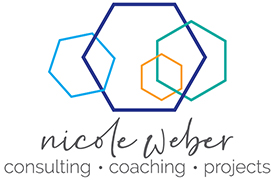There’s no doubt that the way we are all working has had to rapidly change in recent weeks. Many people are shifting to online delivery of what has usually been face-to-face – I’m talking to you, school teachers. People working in welfare, fitness and personal training, and even medicine and therapies will also be shifting their approach so that they can still practice physical distancing but stay connected and do their work.
In this new world, boundaries can be unclear, and people are already edgy about all the change that is going on. They may need extra reassurance or information.
If you’re having to move to this world of online delivery there’s the possibility that you’ll be inundated with emails and phone-calls at all hours and any day of the week. It’s not possible to be on tap all of the time though – that’s a short cut to burnout.
Setting clear expectations and boundaries means that everyone is clear about what you will do and what they will do. Our brains are wired to prefer certainty. Clear expectations and strong boundaries feed our need for certainty. So how can you create certainty and boundaries in your work?
About 20 years ago I worked as a Case Worker and often had up to 60 clients at any point in time. The phone-calls, emails and requests for support would always be more than one person could deliver. It was a great grounding in setting clear expectations and boundaries with clients and others. Since then I’ve worked in a lot of different roles and have used these skills over and over again.
I thought it might be helpful to share some of the strategies I’ve found have stood the test of time. I’ve been doing some work with teachers lately so I’m going to use their work in my examples, but these ideas can translate it lots of different settings. They can also translate nicely to setting clear expectations with colleagues and between managers and workers as well. Here goes:
- Work out your boundaries
Decide how and when you can be contacted. Think about how you can structure contact times so that you can do all of the different parts of your work. And how should people contact you? It may work best for people to email you or text you to start with, and then you can set up a time for a phone conversation if it’s needed. I would suggest only giving out work contacts, not your personal email or mobile number. Which days are you available? Your best approach is to keep these the same as you would have before. This means if you usually work weekdays and business hours, that is when you are available. This means less change for everyone, and you won’t have to unwind anything when things go back to business as usual.
Create some definitions for people about what is an emergency or what is urgent. Everyone will have a different idea about this. For one parent it will be that their child isn’t holding their pen ‘properly’ and for another parent it might mean that their child is in floods of tears and doesn’t understand what the school is expecting from them. Unless you want to be contacted for everything that comes up (and let’s face it, most people will be on a very steep learning curve right now) it’s a good idea to create some clarity for everyone’s sake.
- Be clear from the start
Let’s say you’re contacting all of the parents of your students to talk about the move to online learning, or you are ringing a client who you’d normally see face to face. Those first phone-calls are the perfect opportunity to set up some ‘rules’ or agreements about how you’ll both navigate this new way of doing things. It can be helpful to have write yourself a script with all the key points (see Tip 1) so you cover everything in that first call. Let them know clearly how to get in touch (email, phone etc.) when you are available and when they can expect to hear back from you. Let them know how often you will contact them. If they know you will call them every Thursday morning at 10am, they are less likely to inundate you with calls and messages randomly throughout the week.
Keep your statements clear; if you say, ‘call me anytime you’re concerned’, they WILL call you. If you’re a teacher and you have a handful of anxious parents, expect to be called many, many times each week. Be clear on who is doing what. For example, as a teacher you will be creating learning materials and you may do some online facilitation, but you won’t be stepping each child individually through the material. There are some tasks that you can and will do so be clear about these. Follow up by giving people this information in an email or post it online where it’s easy to find, so they can refer to it whenever they need to. Do this as soon as possible after you have spoken to them, to reinforce the message. By setting clear limits and expectations, you’ll help to calm people’s sense of anxiety.
- Resist boundary creep
It’s up to you to enforce the boundaries. Avoid the temptation to respond to messages outside of your contact hours. I’d suggest not checking messages outside your work hours, but if you find that too hard, avoid responding outside work hours. I find the ‘schedule send’ function in emails (where you can write a reply and choose the time you want to send it) is invaluable. If people see you are responding to messages late at night or on weekends, they will expect you to be available at those times. Working all hours is exhausting and not sustainable. Self-care is really important, and strong boundaries are key to that.
Stick to the tasks you agreed you would do, rather than taking on things that the other person agreed to do. When we don’t enforce boundaries, it creates uncertainty and gives people permission to treat us poorly. For example, if a parent contacts you about online learning materials you know they should be able to access themselves, resist the temptation to go and find the materials and email them to them. It’s better to understand what is getting in the way of the person doing it themselves (is the document hard to find or too big to download, do they need some quick coaching to navigate the website) and to fix the problem so they can be more resourceful in future.
- Stay calm
Sometimes when we try to set boundaries, we can get some push-back. It might be because people have expectations of us that we aren’t meeting (what do you mean you won’t reply to my messages within 5 minutes??) or they aren’t used to having a boundary set. I’ve found that listening to the person, reflecting how they are feeling and then repeating what you’ve previously agreed can work well. That might go something like: “I can hear that you’re frustrated that I didn’t reply to your message on the weekend. As I mentioned when we first spoke about my contact times, if you message me during business hours, I can usually get back to you within half an hour”. It’s important that this is done in a calm and respectful tone. This helps set the example for how you want to be treated and avoids escalating the conflict.
- Practice empathy not rescuing
Something I have learnt again and again over the course of my career is that people are resilient. They are capable of solving their own problems and they will do it in a way that best works for them. Sometimes what people need most is to be heard, not a solution. In many of our jobs we are primed to solved problems. We think ‘I know what will fix this. I’ll just tell them what to do and they will go away’. This short-term fix will create a bucket-load of work for you and set up dependence. Trust me, you don’t want that. A great question to ask when someone brings you their challenge is “what do you think you might do?” If they really get stuck you could ask “has this happened before and what did you do?”. When we support people to solve their own problems, we build their capacity and their confidence. It’s a great investment in their long-term independence.
- Create your exit strategy
This change to how we work may be temporary and it’s important that if your work with people goes back to the way it was before, that this contact you are having now doesn’t become an ‘added extra’. This is especially important for roles like teaching where the workload is already busy enough without tacking yet another task on. When it’s clear that online delivery will be ending, reset the expectations. If you have been in regular phone contact with parents or clients, flag that this will no longer happen. Follow it up with an email. The conversation and email should be similar and might go something like this: “From (date) we will be going back to the school classroom. While we have been in the online classroom, I have been phoning parents each week. I won’t be doing this in the future because I will see your child each day at school. If you need to speak with me about your child, please email me”.
Brene Brown has a lovely phrase: ‘clear is kind’ and I wholeheartedly agree. Clarity means there is less guessing and less anxiety and that is kind to you and the people you support. Stay well.


Recent Comments